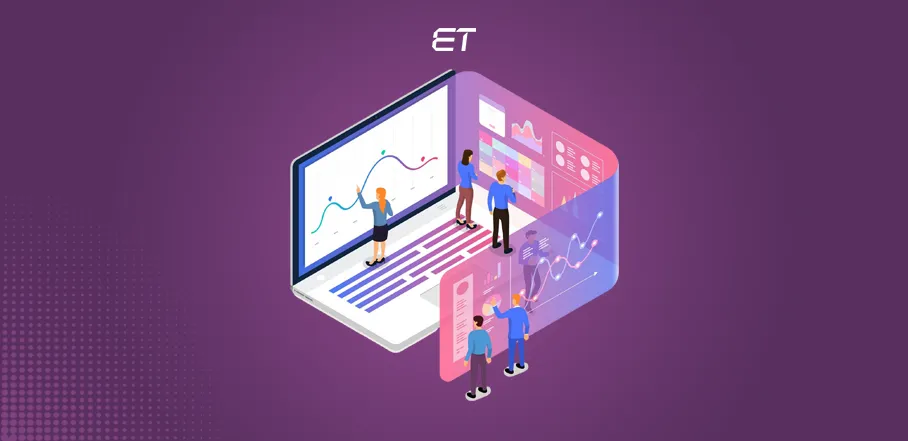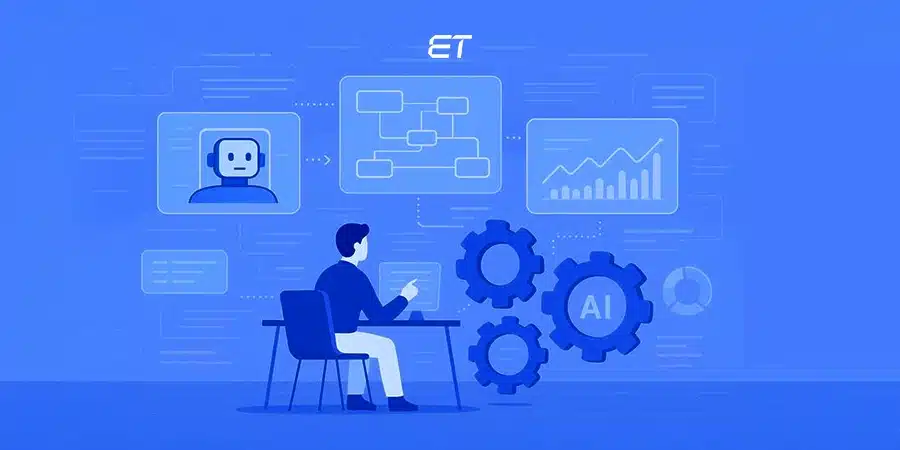
The Essential Strategy Guide to AI Business Process Automation
What if your business could reclaim thousands of hours every month, without hiring a single new employee? That’s the reality forward-thinking enterprises are achieving today with AI Business Process Automation (AI-BPA).
2025 has been the year AI finally shifted from experiments to outcomes. Recently, a major healthcare provider saved 15,000 employee hours every month by automating document-heavy processes.
From startups to global enterprises, businesses are shaping how AI-native systems can transform compliance, finance, and operations at scale.
As we step into 2026, nearly every company is experimenting with AI, but the reality is sobering: a GenAI Divide report shows that 95% of pilots never reach full production, leaving most organizations stuck in proof-of-concept mode rather than achieving real ROI.
In other words, most automation projects stall long before they deliver meaningful outcomes. And the root cause lies in the process: knowing where to start, aligning teams around new workflows, and governing AI systems responsibly.
That’s where AI Business Process Automation (AI-BPA) comes in. What began as simple task automation is now evolving into intelligent systems that optimize and improve workflows, delivering lasting gains in efficiency and scalability.
What is AI Business Process Automation?
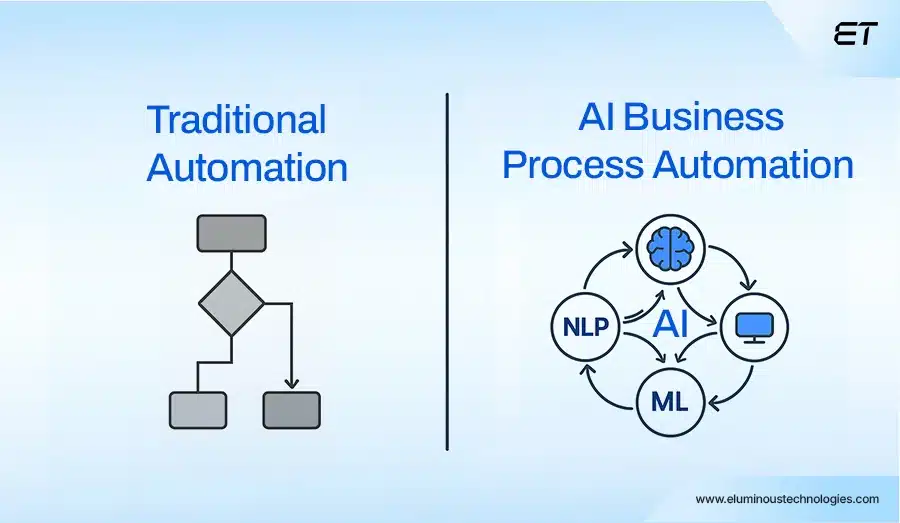
Traditional automation was built on inflexible “if A then B” rules, capable of handling only repetitive, structured tasks.
AI Business Process Automation (AI-BPA) represents the next step forward. It can interpret, learn, and adapt, making it effective with unstructured inputs such as emails, documents, or images.
Unlike rule-based systems that simply execute commands, AI-BPA can recommend decisions, identify more effective pathways, and optimize workflows end-to-end.
By integrating technologies such as natural language processing, computer vision, and machine learning, AI business process automation evolves into a truly intelligent system. It delivers not only speed and accuracy but also adaptability and continuous improvement.
Choose smarter, not harder. This checklist shows you how to identify genuine AI innovators, avoid wasted investment, and achieve a measurable ROI.
Why Businesses Need AI-BPA (The Case for Automating with Intelligence)

Businesses across various industries are adopting AI-powered automation because it addresses challenges that traditional automation could never solve. Let’s examine how leading organizations are implementing it in practice.
-
Cost Reduction and Labor Savings
Manual processes are expensive. Every repetitive task eats into margins. Manual processes drain margins. Walmart’s AI translation in 44 languages removed communication barriers, saving thousands of service hours while delivering faster support across stores.
-
Productivity and Speed
Slow processes delay everything from decision-making to customer service. A Korean enterprise (Company S) reduced receipt processing times by 80% using AI, transforming multi-day bottlenecks into near-instant cycles that enabled the business to move faster.
-
Accuracy and Risk Control
Errors in high-stakes operations cost time, money, and trust. United uses generative AI in its “Every Flight Has a Story” system to generate flight status messages, leading to increased customer satisfaction.
-
Scalability and Throughput
Growth often demands more personnel, yet AI enables organizations to expand without a proportional increase in headcount. In Amazon’s fulfillment centers, AI and robotics efficiently process millions of peak-season orders while keeping costs low. Scaling comes with its own complexities, such as system integration and change management, which must be addressed to sustain long-term efficiency.
-
Customer and Employee Experience
When AI handles routine tasks, both customers and employees benefit. For example, Sephora’s Virtual Artist AR tool boosted conversion rates by 35% and increased “add-to-basket” actions by 25%. Employees, in turn, were freed from repetitive demos and could shift toward personalized advice and creative tasks, turning the customer interaction from transactional to consultative.
-
Agility and Continuous Improvement
Markets shift fast, and static systems fall behind. Sopra Steria automated its bid adjustments, processing tasks 3x and earning ROI in just six months, while the system continuously learned and improved over time.
Discover how AI turns quality assurance into a profit center, with self-healing scripts, predictive analytics, and faster release cycles.
Core Technologies Powering AI Business Process Automation
Intelligent Automation goes beyond replacing repetitive tasks. It creates self-learning, adaptive systems, such as invoice-processing tools that become faster and more accurate with every document they handle, driving speed and scale. The technologies behind it each play a unique role in reshaping how businesses operate.
| Technology | How it Powers Intelligent Automation |
| Machine Learning (ML) | Makes automation predictive by forecasting demand, detecting anomalies, and enabling proactive decisions. |
| Natural Language Processing (NLP) | Allows automation to understand language, enabling it to instantly respond to customer queries or route support emails to the right department without human intervention. |
| Intelligent Document Processing (IDP) | Extracts and validates data from invoices, claims, and contracts, thereby eliminating the need for manual entry. |
| AI Agents & Hyperautomation | Links multiple systems into a single flow, enabling end-to-end processes such as order-to-cash or employee onboarding, without manual handoffs or delays. |
| Computer Vision | Gives automation the ability to see, catching defects in production or enabling cashier-less “grab and go” retail. |
| Outcome | Make AI business process automation faster, smarter, scalable, and continuously improving. |
Outcome? Together, these technologies make Intelligent Automation truly powerful, delivering predictive insights and adaptive workflows that transform the way businesses operate.
A Step-by-Step Implementation Roadmap for Intelligent Automation
Rolling out Intelligent Automation isn’t about flipping a switch; it’s about building an enterprise growth engine, tested in parts, refined, and then scaled to power the whole organization.
A clear roadmap ensures your organization can minimize risks, prove value early, and scale with confidence.
Phase 1: Assessment and Strategy
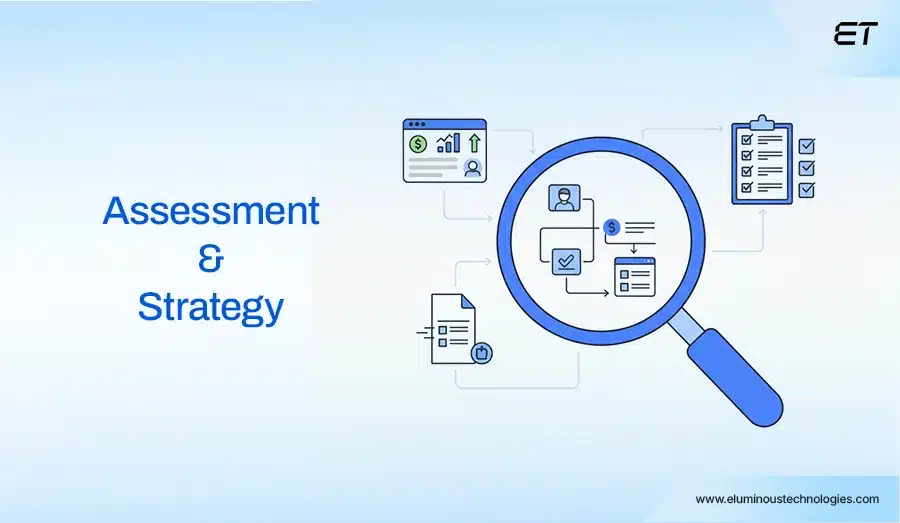
Every successful journey begins by targeting processes with the highest return, typically repetitive, high-volume, and error-prone workflows, such as invoice processing, claims handling, or HR onboarding.
Key questions to ask here:
- Which processes offer the biggest efficiency or cost gains?
- Is the data accurate, accessible, and secure enough for AI?
- What metrics (cycle time, cost savings, error reduction) will prove success?
Data readiness must also be evaluated, because AI business process automation is only as good as the data it learns from. Finally, success needs to be defined upfront. Clear business objectives and KPIs anchor the initiative and keep stakeholders aligned.
Phase 2: Building and Piloting
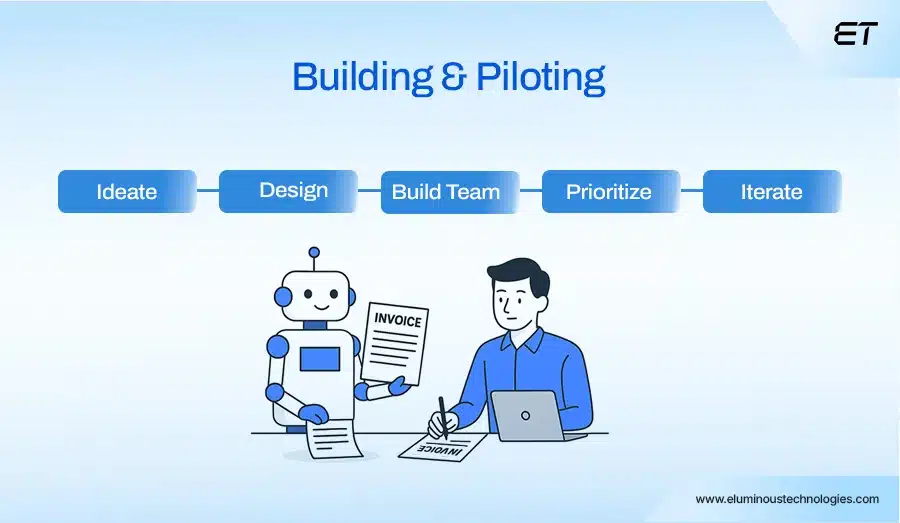
With a strategy in place, the next step is to prove automation delivers real value in your enterprise. Pilots are the safest way to test without disrupting operations. Select the appropriate tools, such as RPA for repetitive tasks, low-code for agility, or IDP for document-intensive workflows.
Start with a small proof-of-concept, such as automating invoice approvals or expense claims. Run it in parallel with your current manual process, and you will see clear comparisons in terms of speed, accuracy, and cost.
At this stage, success is about more than metrics. A well-run pilot shows your teams that automation is an ally. It also secures quick executive buy-in and builds the momentum needed to scale across the business.
Phase 3: Scaling and Integration
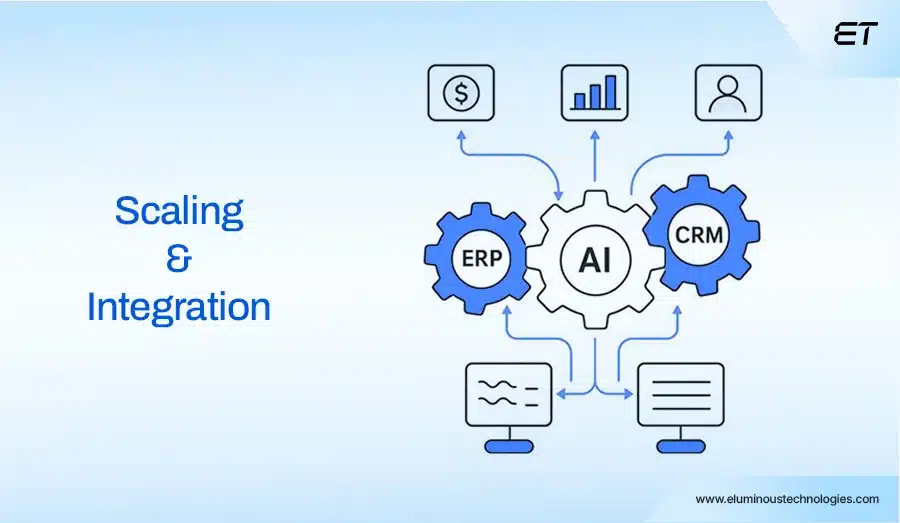
When the pilot proves value, it’s time to expand. Integration with legacy systems often proves to be the biggest hurdle. APIs, middleware, and connectors bridge this gap, allowing AI tools to communicate with ERP, CRM, and other business-critical platforms.
At this stage:
Scale horizontally by rolling out successful pilots to other departments.
Scale vertically by automating entire workflows end-to-end.
Implement governance measures to ensure compliance, auditability, and transparency.
Change management is equally important here. Employees need to be trained and supported so they see automation as an enabler, not a threat.
Phase 4: Monitoring and Optimization
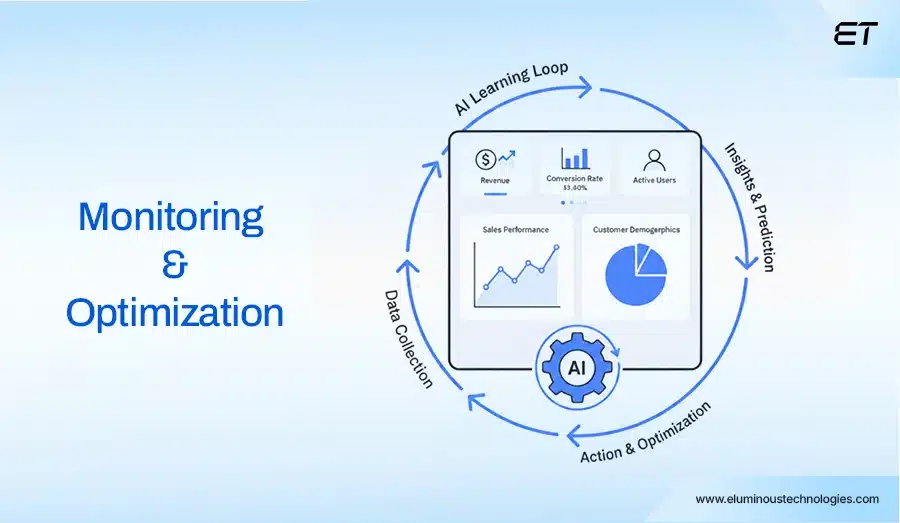
Scaling is not the finish line for your enterprise; it is the beginning of continuous improvement. Intelligent Automation in your business should be treated as a living system, one that you monitor, retrain, and refine over time.
Dashboards and KPIs will help you track whether automation is delivering as promised, while feedback loops with your teams ensure the system gets smarter with every cycle.
Your models require regular retraining to remain accurate. Workflows must also evolve in response to shifting business needs. And ROI should extend beyond cost savings to include compliance, customer satisfaction, and long-term resilience.
When managed this way, automation in your enterprise stops being a project and becomes an integral part of your organization’s DNA.
Results?
By moving step by step, assessing, piloting, scaling, and optimizing, businesses can unlock the full potential of Intelligent Automation. Done right, it becomes not just a project, but a long-term growth engine.
Automation succeeds when your tools match your processes, not the other way around. Discover how custom apps make that possible.
Overcoming Implementation Challenges
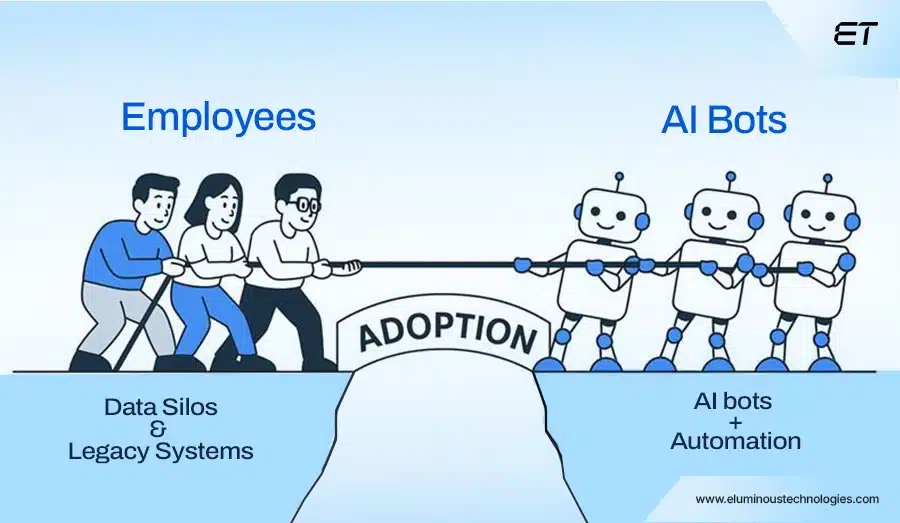
Rolling out Intelligent Automation sounds exciting, but the reality often brings challenges. Employees may resist change if they fear automation is replacing them, which is why open communication and training are critical to building trust.
Data is another big hurdle when it is siloed, inconsistent, or incomplete; automation struggles to deliver results. Many businesses also face the classic question: Is the ROI really worth it?
The answer is yes, but only when you measure both the tangible gains, such as cost savings. Equally important are the intangible benefits, including compliance, resilience, and customer satisfaction.
Add to this the technical limitations of legacy systems and integration gaps, and it is clear why many initiatives stall without the right expertise.
Wrapping Up
The future of business will be shaped by how you combine human collaboration with machine intelligence.
Intelligent Automation is no longer just about automating tasks; it’s about creating autonomous systems that adapt in real time.
For example, an AI-driven supply chain platform can reroute shipments instantly when demand spikes, helping businesses scale faster, respond more quickly, and operate more efficiently.
And the truth is simple: the organizations that act on “enterprise-grade AI” today create the strongest chance of becoming tomorrow’s leaders.
At eLuminous Technologies, we help enterprises prepare for this future by developing AI-powered solutions that modernize legacy systems, streamline workflows, and scale seamlessly across departments.
If you are ready to see how Intelligent Automation can transform your business, let’s talk.
Frequently Asked Questions
Q1. What is the meaning of Intelligent Automation?
Intelligent Automation combines traditional automation with AI technologies like machine learning, NLP, and computer vision. It enables systems not just to follow rules but to learn, adapt, and handle complex, end-to-end business processes.
Q2. What is the difference between Intelligent Automation and AI?
AI is a technology that mimics human intelligence, including learning, reasoning, and problem-solving. Intelligent Automation applies AI within workflows, combining it with tools like RPA to build self-learning, scalable business processes.
Q3. What are the 4 types of automation?
The four main types are: Fixed automation (repetitive tasks at scale, e.g., assembly lines), Programmable automation (batch production with adjustments), Flexible automation (quickly adapts to changes), and Intelligent automation (AI-driven, adaptive systems handling complex workflows).
Q4. What is the difference between RPA and IPA?
Robotic Process Automation (RPA) automates rule-based, repetitive tasks, such as data entry or form filling. Intelligent Process Automation (IPA) builds on RPA by adding AI, enabling systems to understand language, analyze data, and make decisions.



